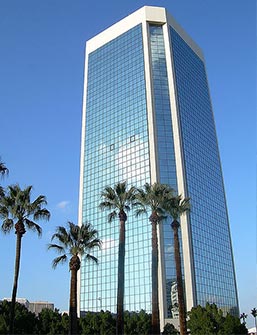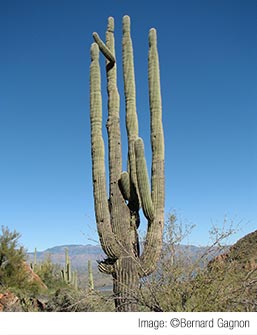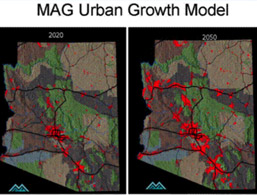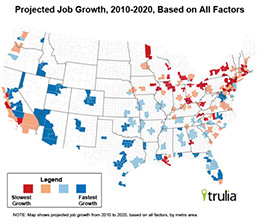Phoenix Market

Why Phoenix
Phoenix is located in the heart of the fastest growing and most dynamic metropolitan area in the country with a population of over 4 million people. Phoenix has a population of 1.6 million and is the fifth largest city in the United States, forecast to be at least #4 by 2020. Adjacent cities include Scottsdale, Mesa, Chandler, Gilbert, Glendale, Goodyear and Surprise – and other nearby cities includes Tucson, Yuma and Flagstaff.
The Phoenix-Casa Grande-Tucson corridor has been and is expected to be one of the fastest growing areas in the U.S. in the next decades. The area’s explosive growth over the last decade has made it one the largest metropolitan areas in the country
The U.S. Census Bureau estimates that by 2030 the population of Phoenix will grow to 2.2 million and that the population of the metro area will reach 6.3 million.
Phoenix is the capital of the state of Arizona, located in Southwestern United States adjacent to the states of California, Nevada, Utah, Colorado (at “4 corners”) and New Mexico. Arizona shares a vibrant border with Mexico that facilitates trade between the U.S. and Latin America.
 Metro Phoenix Economy
Metro Phoenix Economy
For the past 20 years, Phoenix consistently ranked as one of the fastest growing economies of all metro areas in the United States. The value of goods and services produced in the Phoenix metro area reached $187.4 billion in 2008, larger than the output of many countries.
The manufacturing base of the Phoenix economy is diversified, but particularly strong in aerospace and electronics. Semi-conductor factories such as SUMCO Southwest, ON Semiconductor, Microchip Technology and Intel are based in the greater Phoenix area.
Financial service companies, including national banks and insurance companies with large support offices and data centers, are located in Phoenix. They are attracted to Phoenix, in part, because of the low occurrence of weather disruptions or earthquakes. American Express, USAA, State Farm Insurance and Charles Schwab employ thousands of residents in Metro Phoenix offices.
The information technology industry is very robust with hundreds of companies involved in software development, or computer system integration or providing internet service. Healthcare services and the bioscience industry are also pillars of growth in Phoenix. Since 2002, jobs in this industry have grown at three times the national average. There are over two-dozen major hospitals in the region including the Mayo Clinic and the Barrow Neurological Institute at St. Joseph’s Hospital.
The Phoenix Biomedical Campus, located on 28 acres in downtown Phoenix, includes the TGen genomics research institute, a branch of the University of Arizona – College of Medicine, and the Arizona Biomedical Collaborative research center. Expansions of the College of Medicine and of the Arizona Cancer Center are planned for that downtown campus. Retail sales are also important to the Phoenix economy with dozens of luxurious shopping malls that attract clients from all over the world.
Phoenix also has many large distribution centers to supply major cities throughout the Southwest, including Los Angeles and San Diego located 350 miles to the west. Tourism and recreational services are important segments of the economy. Phoenix Sky Harbor International Airport serves nearly 40 million passengers every year. It is one of the nation’s top ten busiest airports and is ranked 19th in the world for passenger traffic.
As a result of the global recession, the Phoenix economy contracted by one percent in 2008 in real terms. This contraction was mostly caused by the sharp drop of construction of new houses and commercial buildings.
The unemployment rate in Phoenix always tracks lower than the national average, reflecting the diversity and resiliency of the Phoenix economy. The labor force of Phoenix is not reliant on any single industry.
History of Phoenix
Why would anybody want to start a city in the middle of a desert? The answer is, surprisingly, agriculture. The Salt and Verde Rivers of central Arizona were exploited for large-scale agriculture by Native Americans as early as the 11th century. The area that now encompasses Phoenix was a center of the Hohokam culture, which built large canal systems and a network of towns and villages, whose remains may be viewed in the city to this day. White settlers discovered the remnants of the Hohokam culture in the 19th century. The city’s name reflects its history as a city “reborn from the ashes” of the previous settlement.
 Phoenix is Born
Phoenix is Born
By 1868, a small colony had formed approximately four miles east of the present city. Swilling’s Mill became the new name of the area. It was then changed to Helling Mill, after which it became Mill City, and years later, East Phoenix. Swilling, having been a confederate soldier, wanted to name the new settlement Stonewall after Stonewall Jackson. Others suggested the name Salina, but neither name suited the inhabitants. It was Darrell Duppa who suggested the name Phoenix, inasmuch as the new town would spring from the ruins of a former civilization. That is the accepted derivation of our name.
European-American settlement of the area commenced in the 1860s, and in 1911 the completion of the first of several large reservoirs in the mountains north and east of Phoenix insured its success as a center for irrigation-based agriculture. Many tens of thousands of acres were planted in citrus and cotton and other crops, and for many years, intensive, year-round irrigated agriculture formed the basis of the economy. Recent years are seeing a revival, and trendy hotels, bars, shops and restaurants are making it a place to be again.
Mild and sunny winter weather also ensured a thriving tourism industry, and encouraged many Easterners and Midwesterners to relocate to Phoenix. High-tech industry began to flourish after World War II, and since that time the growth of Phoenix has been explosive. As a result, a population of just over 100,000 in 1950 has given way to a 2006 estimate of 1,512,986 (with the metro area estimated at 4,039,182.
Phoenix was incorporated as a farming town in 1881 at the confluence of two rivers that flow from the nearby mountains. It was built by settlers of European ancestry on the ruins of a town that had been abandoned by Native Americans in the 1400s.
Since the new settlers were using the same canals and roads of their predecessors, it was logical for them to select the name Phoenix, the mythical bird that rose from the ashes of a previous civilization.
The population of Phoenix grew slowly through World War II, reaching 350,000 by 1950. With the development of air conditioning and opening of factories to manufacture electronics and aviation products, population growth accelerated.
Modern History
Phoenix’s modern history begins in the second half of the 19th century. In 1867, Jack Swilling of Wickenburg stopped to rest his horse at the foot of the north slopes of the White Tank Mountains. He looked down and across the expansive Salt River Valley and his eyes caught the rich gleam of the brown, dry soil turned up by the horse’s hooves. He saw farm land, predominately free of rocks, and in a place beyond the reach of heavy frost or snow. All it needed was water. Returning to Wickenburg, he organized the Swilling Irrigation Canal Company, and moved into the Valley. The same year, the company began digging a canal to divert some of the water of the Salt River onto the lands of the Valley. By March 1868, water flowed through the canal, and a few members of the company raised meager crops that summer.
 The Future of Phoenix
The Future of Phoenix
The population growth rate of the Phoenix metro area increased by nearly 4% per year for the past 40 years. That growth rate slowed during the recession of 2008-09. However, the U.S. Census Bureau predicts it will resume with the national economic recovery, and it already has begun to do so.
The municipal governments in the greater Phoenix region are planning for a population growth of at least two million residents over the next two decades, reaching an estimated population of 6.2 million by 2030. To prepare for that population growth, an enormous amount of infrastructure is planned, from new freeways to expansions of the light rail lines.
Construction is occurring at the Phoenix Sky Harbor International Airport on the new PHX Sky Train, an elevated and automated train that will transport people between the nearest Metro light rail station and the main terminal. That first phase was completed in 2013. The second phase extension to the west will connect the other two terminals and the rental car center by 2020.
People move to Phoenix not just for the weather and high quality of life, but also for jobs. And companies move to Phoenix to take advantage of the highly skilled labor force, low operating costs and low risk of natural disasters. There are no tornadoes or hurricanes in Phoenix – only the occasional ‘haboob’ – dust storm – which is sort of a gust of dusty wind that deposits dirt on your car once a year. More photo op that anything else.
Phoenix was awarded the distinction of All America City in 2009 by the National League of Cities based on the completion of innovative projects with community input. Those projects included the Sonoran Preserve Initiative, the teen program at the public libraries and the development of the downtown campus for Arizona State University. Surrounding cities have comparable award-winning programs.
With professional teams in every major sport, a symphony orchestra, professional opera, ballet and theater companies, and world-class museums, Phoenix has the attractions of a major cosmopolitan city along with affordable housing.
Phoenix has more than a dozen degree granting universities and the largest community college system in the United States. Arizona State University has more than 67,000 students and dozens of graduate programs on four campuses in greater Phoenix, including a campus in downtown and in west Phoenix.
Climate
Warm weather. It’s the No. 1 reason visitors come to Greater Phoenix. According to data compiled by the National Climatic Data Center, Greater Phoenix basks in sunshine during 85 percent of the daylight hours — more often than any other major metropolitan area in the United States.
Sunny days and comfortable temperatures are the rule November through April, making this time the most enjoyable and popular time of year to visit. Vacation resorts are plentiful throughout the valley and the most popular outdoor activities are golfing, hiking, hot air balloons and scenic day trips in to the nearby desert or to one of the nearby mountain towns.
Greater Phoenix’s average annual temperature is 72 degrees, and the average annual high is 85 degrees. The average high in winter is 67 degrees, and highs frequently flirt with 80 in the spring and fall. And it doesn’t rain much — less than 8 inches a year—which means the weather is ideal for hiking, lounging poolside or watching a spring training baseball game.
As for summer? Hey, it’s hot. The old axiom is that “it’s a dry heat,” and there’s truth to that. The Sonoran Desert’s super-low humidity means 90-degree temperatures feel quite nice, and the arid climate causes perspiration to evaporate quickly, keeping you cooler and drier. And here’s another hot tip: Summer is the best time to find great rates at Greater Phoenix’s hotels and resorts.
Interesting Facts
- Phoenix is the United States’ sixth-largest city with a population of over 1.4 million.
- Greater Phoenix (which includes, among others, the cities of Chandler, Glendale, Scottsdale and Tempe) has a population of nearly 4.3 million and covers 2,000 square miles.
- Maricopa County—where Greater Phoenix is located—covers 9,127 square miles, making it about the size of New Hampshire.
- Phoenix’s elevation is 1,117 feet.
- Greater Phoenix is located in the Sonoran Desert, which is one of the wettest and greenest deserts in North America, thanks to 3-15 inches of annual rainfall.
- According to data compiled by the National Climatic Data Center, Phoenix basks in sunshine more often than any other major metropolitan area in the U.S. The sun shines on Phoenix during 85 percent of its daylight hours.
- Phoenix has an average annual rainfall of 7.7 inches, an average annual temperature of 72.6 degrees and an annual high temperature of 85.9 degrees. The average high temperature in winter is 67 degrees.
- Greater Phoenix is home to more than 200 golf courses.
- Greater Phoenix consistently ranks among the nation’s top cities in the number of Five Diamond and Four Diamond and Five Star and Four Star resorts.
- More than 16 million people visit metropolitan Phoenix each year.
- More than 37 million people visit Arizona each year.
- Phoenix is one of only 13 U.S. cities with franchises in all four major professional sports leagues: Phoenix Suns (NBA), Arizona Diamondbacks (MLB), Arizona Cardinals (NFL) and Phoenix Coyotes (NHL).
- Greater Phoenix is currently home to 15 Cactus League baseball franchises
- The Waste Management Open “The Phoenix Open” played each February at the TPC Scottsdale, is the best-attended event on the PGA Tour, averaging more than 500,000 spectators.
- Greater Phoenix is home to college football’s Tostitos Fiesta Bowl and Buffalo Wild Wings Bowl. The 2007 and 2011 BCS National Championship games were played at University of Phoenix Stadium.
- Phoenix International Raceway plays host to two NASCAR events each racing season.
- Greater Phoenix’s major industries are (1) high-tech manufacturing, (2) tourism and (3) construction.
- Greater Phoenix is the corporate headquarters of five Fortune 500 companies: Freeport McMoRan, PetSmart, Avnet, Republic Services and Insight Enterprises.
- Phoenix is home to the largest municipal park in North America. South Mountain Park and Preserve covers more than 16,500 acres and has more than 50 miles of hiking, biking and equestrian trails.
- There are six lakes within a 75-minute drive of Phoenix.
- Phoenix has museums to suit nearly every taste. The Heard Museum (Native American); Desert Botanical Garden (the world’s largest collection of desert plants); Taliesin West (home of the Frank Lloyd Wright Foundation); the Phoenix Art Museum (the Southwest’s largest art museum); the Fleischer Museum (American Impressionism); the Arizona Science Center; the Hall of Flame (featuring the world’s largest collection of fire-fighting equipment); Pueblo Grande Museum and Cultural Park (Native American) and the Musical Instrument Museum (MIM) are among the cultural hot spots.
- The Heard Museum has an extensive collection of American Indian artifacts, including the largest kachina doll collection (donated in part by the late Arizona Senator Barry Goldwater) of any museum in the country.
- Arizona is home to 22 American Indian tribes.
 Major Industries
Major Industries
Manufacturing and tourism, traditionally the base of the city’s economy, continue to be important to Phoenix. Major industrial products manufactured by companies located in the metropolitan area include aircraft parts, electronic equipment, agricultural chemicals, radios, air-conditioning equipment, leather goods, and native American crafts.
Tourism is an especially vital part of the economy. With more than 10 million visitors from the throughout the United States and Canada annually visiting for the warm weather and sunshine in the Valley of the Sun, Phoenix continues to be an important resort center. Flights from Phoenix travel to 89 locations within the United States and 17 cities internationally including destinations in Norway, Sweden, Greenland, Mexico, India, and Canada. The airport is constantly seeking to improve its facilities as is demonstrated by the nearly 80 ongoing slated projects costing an upwards of $600 million.
As the result of the population boom, the economy of Phoenix has taken on new dimensions in recent decades by moving into technology and service industries. Tourism and business services in particular now account for nearly 77 percent of the area’s total employment. Another sector of growth has been financial services and banking as several significant processing and/or regional headquarters operations call Phoenix home: American Express, Chase Bank, Bank of America, Discover Card Services, and Wells Fargo Bank. High technology and aerospace firms hold a considerable share of the manufacturing jobs throughout the state (56 percent).
Labor Force and Employment Outlook
The local labor force is described as young, plentiful, and well-educated. Arizona consistently ranks in the top five growth states, and workers are attracted by the quality of life to be enjoyed. A right-to-work state, Arizona has union membership of 3.6 percent in the private sector.
Moving South and West? Metropolitan America in 2042
The United States could have three more megacities (metropolitan areas over 10 million) by 2042, according to population projections released by the United States Conference of Mayors (USCM). Chicago, Dallas-Fort Worth, and Houston are projected to join megacities New York and Los Angeles as their metropolitan area populations rise above 10 million. At the projected growth rates, Atlanta, Miami, Phoenix, and Riverside-San Bernardino could pass the threshold by 2060.
add two, McAllen and El Paso, as would Florida (Cape Coral and Sarasota) and South Carolina (Columbia and Charleston).
The Top Ten in 2042
The top ten rankings would change relatively little. The top five would continue to be (in order), New York, Los Angeles, Chicago, Dallas-Fort Worth, and Houston. But the relationships would change materially. Dallas-Fort Worth would trail Chicago by only 30,000, much reduced from the 2012 gap of 2.9 million. If the annual projected growth rate were to continue another year (to 2043), Dallas-Fort Worth would take third position from Chicago, ending more than eight decades in that position. Houston also is forecast to gain substantially on Chicago, from a deficit of 3.3 million in 2012 to only 900,000 in 2042. If the respective annual growth rates were to continue, Houston would bump Chicago to fifth place by 2050.
Atlanta would move up three positions to number 6, and could be the nation’s 6th megacity before 2050. Miami would move from 8th to 7th. There would be two new entrants to the top ten: Phoenix and Riverside-San Bernardino, ranked 8th and 9th. These two, along with Miami could become megacities before 2060. The tenth position would be held by fast growing Washington, which would remain the only non megacity in the top ten.
Seven of the top ten metropolitan areas in 2042 are forecast to grow very rapidly. Phoenix and Riverside-San Bernardino are projected to grow at annual rates of 2.1 percent and 2.0 percent respectively, approximately three times the 2012-2042 national growth rate projected by the US Census Bureau (0.7 percent). Atlanta, Dallas-Fort Worth and Houston would grow at 2.5 times the national rate (1.7 percent), Miami nearly double (1.3 percent) and Washington at 1.5 times the national rate (1.0 percent).
